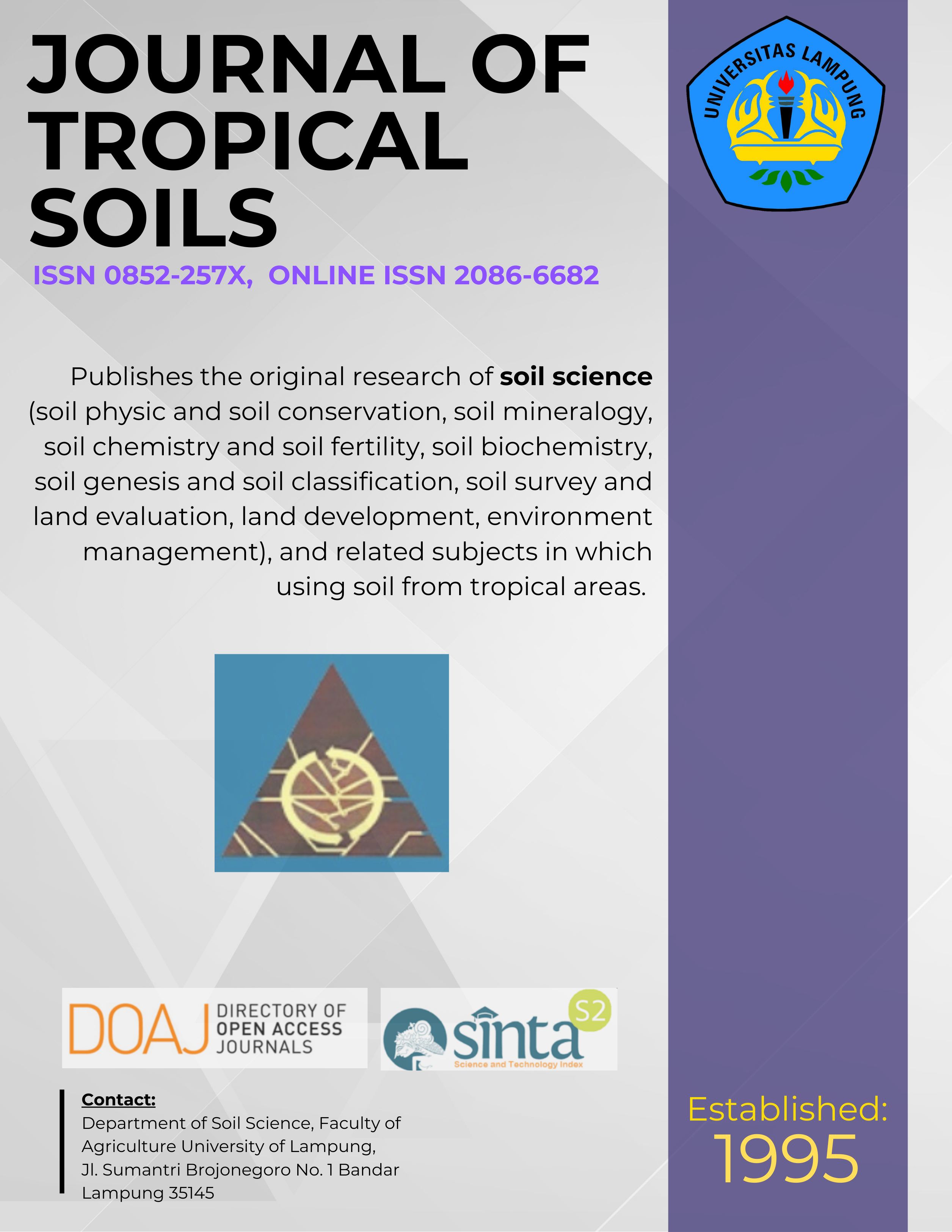Site Specific Nutrient Management for Maize on Ultisols Lampung
Main Article Content
Abstract
Site Specific Nutrient Management for Maize on Ultisols Lampung (A M Murni, JM Pasuquin, and C Witt): Lampung is the third major maize producing province in Indonesia after East Java and Central Java. In Lampung maize is cultivated mainly in upland areas with ultisols and only some cultivated on paddy field as a secondary crop in the dry season. The average maize yield in Lampung is still 3.4 Mg ha-1 bellow yield potential of 7-10 Mg ha-1. To increase the productivity of maize through site-specific nutrient management (SSNM), on-farm trials were conducted in five locations in Lampung i.e. four locations in Central Lampung District (Sidowaras, Binjai Ngagung, Watu Agung and Balai Rejo) and one location in South Lampung District (Trimulyo, Tegineneng Sub District) during the 2004/2005, 2005/2006 and 2006/2007 rainy seasons. The experimental setup followed a standard protocol at all sites and included nutrient omission plots (PK, NK, NP) to estimate indigenous nutrient supplies, an NPK plot to measure yield response to fertilizer application, and a farmers’ fertilizer practice (FFP) plot in each farmer’s field. An SSNM treatment plot was included in the second and third seasons. Each of the above treatments was paralleled by a plot with improved crop management practice (ICM), i.e. higher planting density, addition of lime, and addition of magnesium. Results showed that yield response to fertilizer N, P and K application in these sites were: N = 2.3-4.1 Mg ha-1; P = 0.6-2.0 Mg ha-1; K = 0.3-2.4 Mg ha-1. Attainable yield in the three seasons on average ranged from 7.6 Mg ha-1 to 10.6 Mg ha-1. Yield in the SSNM treatment (with or without ICM) was significantly higher than the FFP indicating great opportunities for farmers to increase productivity and profitability with improved nutrient and crop management.Â
Downloads
Article Details
Section
License for Authors
Authors who publish with this journal agree to the following terms:
- Authors retain copyright and grant the journal right of first publication with the work simultaneously licensed under a Creative Commons Attribution License that allows others to share the work with an acknowledgement of the work's authorship and initial publication in this journal.
- Authors are able to enter into separate, additional contractual arrangements for the non-exclusive distribution of the journal's published version of the work (e.g., post it to an institutional repository or publish it in a book), with an acknowledgement of its initial publication in this journal.
- Authors are permitted and encouraged to post their work online (e.g., in institutional repositories or on their website) prior to and during the submission process, as it can lead to productive exchanges, as well as earlier and greater citation of published work (See The Effect of Open Access).
License for Regular Users
Other regular users who want to cite, distribute, remix, tweak, and build upon author’s works, even for commercial purposes, should acknowledge the work’s authorship and initial publication in this journal, licensed under a Creative Commons Attribution License.

